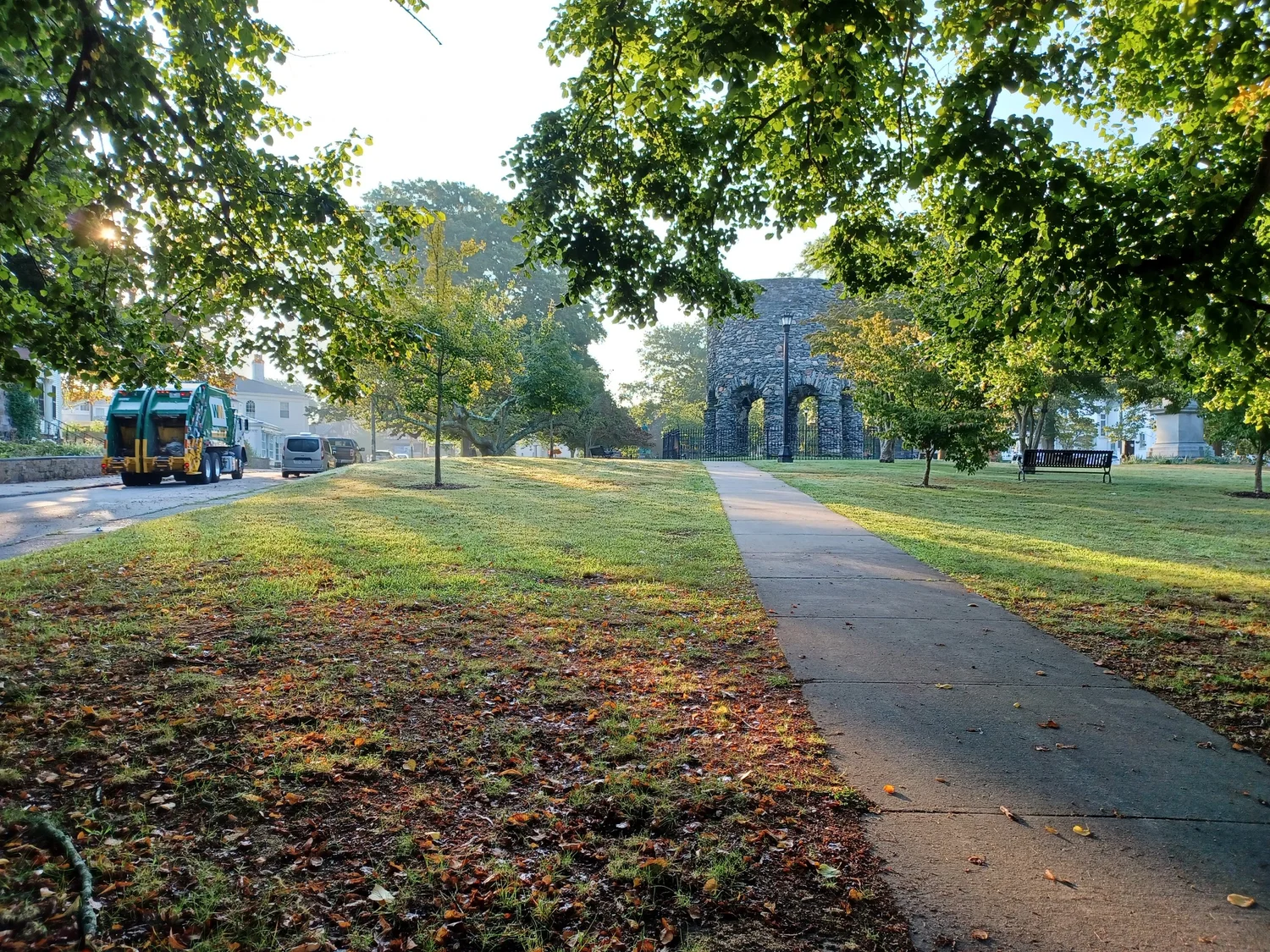My module combines social psychology, climate science, civics and urban planning.
We start with games that show how humans act irrationally. We hold onto old fears we know make no sense (like fears of needles, or first days) and we anchor our beliefs in what we can see. We build a model of the block or school as it should be, and usually kids make it look pretty close to how it is.
Then we cover how behavior and thought can change in response to big forces. Industrialization changed how we use space and time. It also began a massive geochemical experiment...that we had locked in once we knew it was an experiment, making change to a low-carbon life a steep challenge. We add a park, or basketball court or trees, to our model and role-play how it changes behavior.
Then we go through exercises to understand how to negotiate real changes amid uncertainty. We write and draw about the kind of life we want in any climate. We role-play as different civic actors to understand how public and private players shape the city. And we work with budgets to understand the constraints that make sweeping gestures unlikely.
So then we continue the role-play, negotiating the limits and rationale for a project to make a real place healthier. Nobody in my classes proposes to make the whole East Coast run on solar.
They do propose changes that make real places healthier. The model comes to show a proposal to make a real place easier to use, read and draw on for safety. These changes have included a plan to harvest cafeteria waste, a proposal to connect a park to a neighborhood over a highway, and a design to increase biodiversity on a new Manhattan superblock. All these changes reflect what the resiliency and green experts teach: neighborhoods with more green space and neighborly ties reduce carbon. They withstand disaster, or at least can. And they motivate investment and support in any climate.
In the future, I want to add written memos and logs to this module, and close with a celebration where elected officials come to see the model and hear kids' proposals.
Kids are growing up under intense uncertainty. The model and role play give them tools to turn uncertainty into agency, to begin forming civic ties, and to become more confident about speaking in ways that address human psychology for the kinds of changes they need in public life.
As essential questions go, “what are you going to do to stop climate change?” is unanswerable. As is “what kind of world do you want to live in?” Both try to sidestep the fact that our students are cognitively limited individuals within dynamic, gargantuan systems. So are we. This is an opportunity to pose essential questions that students can answer in critical ways.
But “what kind of neighborhood life do you want to work for?” or “what do you want to do every day?” are answerable essential questions. They're also questions whose potential answers get at the task of negotiating uncertainty under climate change.
AllBeforeUs says to kids: here’s what you can respond to. Here’s what you need to know about the systems at work. And here’s your chance to negotiate your way to a better outcome.
Asking “how can we address climate change?” can operate on the same plane as “how do we address mortality?” or “how do we address the fact that we have bodies that can’t teleport?” Climate change creates constraints- some pleasures will be impossible, some healthy choices will be imperative. And thinking of it as a constraint leads young people to invest in mental models that get them to more ecologically and socially productive outcomes.
The SYSTEMS that got us here are complex. They’re human, atmospheric, and civic. We can read them and creatively form strategies about how to manage uncertainty in our daily lives.
We can have FUN and build CONFIDENCE in CRITICAL THINKING bringing kids close to the LIMITS on human rationality, the LIMITS on what they can do about climate change, and the CREATIVE COMPROMISES of life in an uncertain century.
If we teach the SCIENCE of how people behave, how the climate responds and how we can engineer our cities to survive the result…
...we can create a PROJECT in which young people do URBAN PLANNING to make their cities
EASIER TO READ, STRONGER IN CRISIS, AND HEALTHIER IN ANY CLIMATE.

